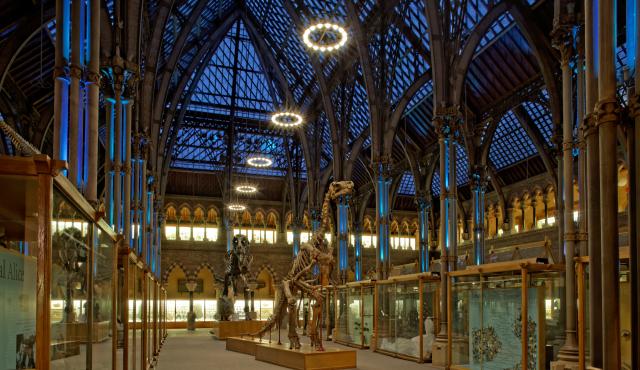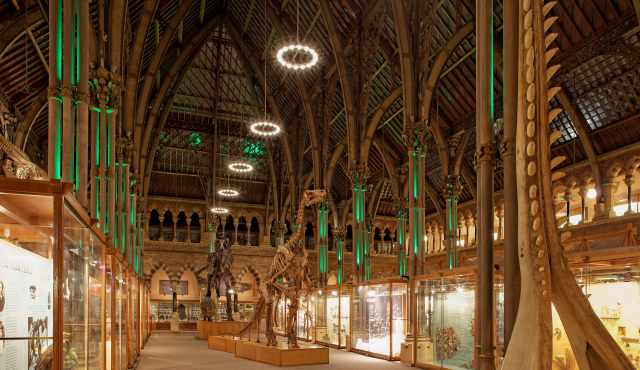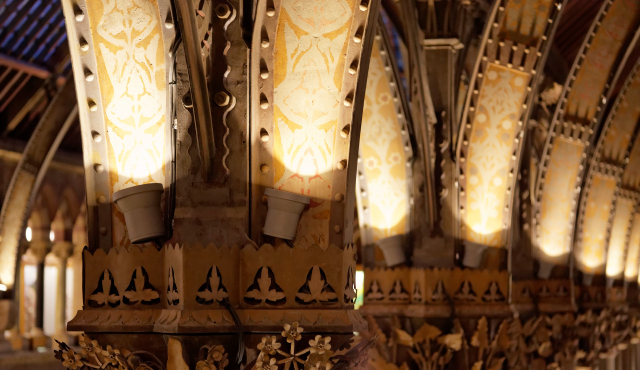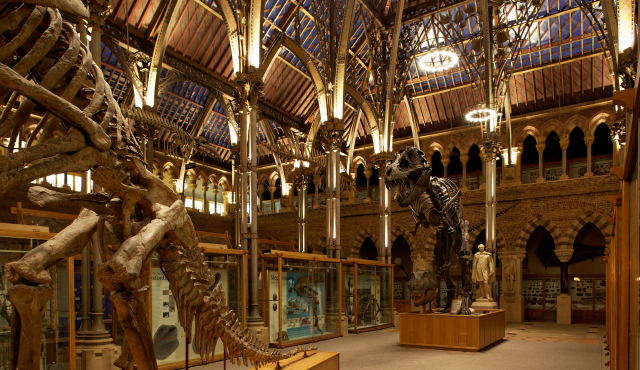Zumtobel has delivered a new architectural lighting scheme for Oxford University’s Museum of Natural History. As a Grade I listed building, the design and installation process was challenging; however the performance of the LED products, the expertise of Zumtobel and a collaborative approach from the project team has resulted in a spectacular lighting solution that meets the complex requirements of the space.
Oxford University’s Museum of Natural History was originally built in 1860. In December 2011, the museum began an extensive project to repair its roof structure. At the same time, a routine lighting survey conducted by the University’s Deputy Electrical Engineer demonstrated huge potential to upgrade and enhance the minimal lighting that was then in situ.
 |
|
Oxford University’s Museum of Natural History relit with LEDs from Zumtobel. (All photos courtesy of Zumtobel) |
As such, a project team was assembled, which included the museum’s electrical engineer, Zumtobel, Purcell Architects and Monard Electrical.
John Cronin, Chief Lighting Engineer - Specification at Zumtobel comments: “The first challenge was that only limited drawings of the building existed so we had to manually measure and digitally model the building. Then once a design principle was agreed we created a series of mock-ups that allowed us to select appropriate luminaires, positions and beam angles, ensuring we avoided unnecessary issues when it came to final installation on site.”
 |
|
Oxford University’s Museum of Natural History light up with green LEDs from Zumtobel. |
Furthermore, a significant challenge for the team was developing an appropriate fixing system that would not damage the Grade I building. Monard Electrical played a fundamental role in the design and selection of innovative fixings, which allowed the luminaires and cabling to be attached to the structure by magnetic brackets.
“The use of magnets followed exhaustive testing for compatibility with the Zumtobel supplied luminaires,” recalls Richard Francis, Partner at Monard Electrical. “However the end result is exceptionally discreet cabling where black cabling appears against a black background, and grey against a grey – with no fixings directly installed on the museum’s structure.”
The resulting architectural lighting solution comprises a combination of Zumtobel, Bega and Limburg luminaires, which significantly improve the overall lighting in the museum as well as illuminate the architectural features of the building, enhancing aesthetics and providing an energy efficient solution.\
 |
|
Oxford University’s Museum of Natural History pillars lit up with LEDs. |
All luminaires are dimmable and networked to a Zumtobel lighting control system, with an integrated central battery for emergency, designed in combination with Oxford based M&E Consultancy CBG Consultants Limited. Day to day operation is fully automated with daylight control by a roof mounted Skyscanner device that monitors the available amount and direction of daylight. For events, a choice of carefully balanced lighting scenes, including RGB colour change, are accessed wirelessly by museum staff, via an iPad.
Robert Gregg, Deputy Electrical Engineer at Oxford University’s Estates Services concluded: “For the first time the museum is benefitting from a well designed lighting scheme that has attracted critical acclaim from external conservation bodies. The results are a testament to the commitment, passion and pride in the project displayed by the whole team.”
 |
|
Oxford University’s Museum of Natural History. |
Oxford, England
Architect: Oxford University
Lighting technology: Oxford University Estates
Electrical consultants: CBG Consultants Limited
Photos: Redshift Photography















